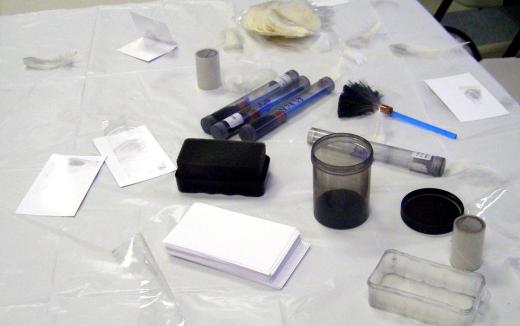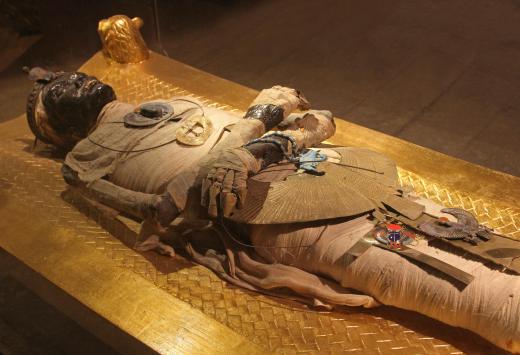What is Dermatoglyphics?
 Mary McMahon
Mary McMahon
Dermatoglyphics is the scientific study of the patterns on the fingers and hands. People have been studying each other's palms and hands for centuries and many cultures have a history of believing that the features on the hands can provide insights into someone's character or future. Dermatoglyphics takes a more scientific approach, looking for features which are associated with certain disorders. A number of claims are made about dermatoglyphics, some of which are true, some of which are less so.
The formation of the hands begins very early on in fetal development. As a result, people with congenital abnormalities, especially severe ones, often develop unusual or abnormal dermatoglyphics. Children with trisomy 21, for example, tend to have broad hands with stubby fingers, and certain types of formations in their fingerprints are especially common. Doctors can sometimes use dermatoglyphics as a diagnostic tool to identify congenital abnormalities, and the errors in fetal development which contribute to abnormal dermatoglyphics are also a topic of scientific interest.

Specific variations in fingerprints have been linked with a number of chromosomal abnormalities, as have general variations in the structure, shape, and size of the hands and feet. Usually, numerous other diagnostic clues exist to indicate that someone has a severe genetic abnormality, but studying the hands and feet can still be of interest. Some people also claim that dermatoglyphics can be used in the diagnosis of disease, ranging from mental disorders to certain cancers. Studies seem to suggest that dermatoglyphics cannot be used for this purpose, as there are no notable and distinct differences between study samples and the general population.

The study of dermatoglyphics is also important in fingerprint analysis, a technique which is used to link fingerprints associated with a crime or event to a specific individual. Fingerprints are highly unique, and especially when a sample includes prints from several fingers, it can be used to link someone with an event. Fingerprints can also be used to identify deceased individuals who lack identification, and because fingerprints linger so long, scientists have even successfully taken fingerprints from ancient mummies by carefully rehydrating the skin.

Scientific approaches to studying the development of distinctive skin ridges on the hands and feet should not be mistaken with palmistry and various types of fortunetelling which also rely on the skin ridges. Although skin ridges can sometimes predict someone's future, as in the case of distinctive skin ridges which indicate that someone has a chromosomal disorder, they will not predict character, occupation, or future lovers.
AS FEATURED ON:
AS FEATURED ON:













Discussion Comments
@sunnySkys - I'm sure they got the mummy's fingerprint for scientific curiosity. Or maybe the mummy was on display in a museum. I bet a finger print would be a really neat thing to ad to a museum exhibit.
One thing I wanted to point out is that although fingerprints are great for identification, some people are born without fingerprints! I remember reading that somewhere awhile back. Although, not many people are born without fingerprints so fingerprints are still a good way to identify most people.
I find it interesting that although palmistry is totally bogus, you can tell some things about a persons health by looking at their hands. I wonder if whoever invented palm reading was sort of onto something, you know?
I also think it's cool that finger prints last so long! Imagine getting a finger print from a mummy that is thousands of years old! Very cool, although I don't know what you would use it for.
Post your comments